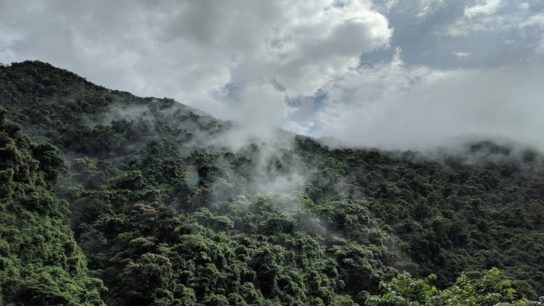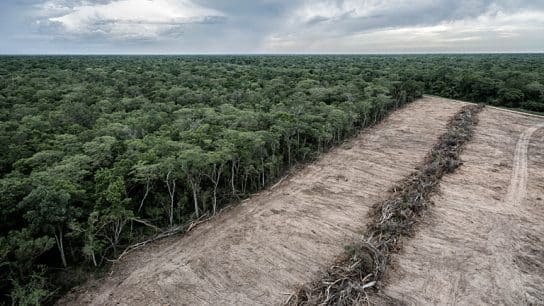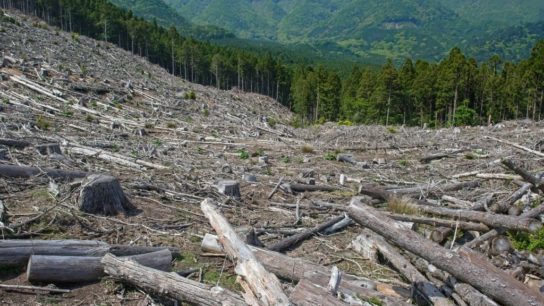Ambition for biodiversity conservation cannot be dissociated from ambition for biodiversity finance – the two go hand in hand. If we do not deliver on biodiversity finance, the commitments made in the Kunming-Montreal Biodiversity Framework will remain empty hopes.
—
By Alice Stroud
For far too long, the world has been complacent about the looming crises of climate change and biodiversity loss. The numbers speak for themselves and are available for everyone to access.
Around 1 million animal and plant species are now threatened with extinction, many within decades –more than ever before in human history. By the year 2100, climate change could result in the loss of more than half of African bird and mammal species, a 20-30% decline in the productivity of Africa’s lakes, and significant loss of African plant species.
Three quarters of the land on Earth has been “severely altered,” and the world’s oceans have been hit even harder. Oceans are disproportionately impacted by threats from human activities. They are warmer, more acidic and more polluted than ever before. Our oceans also hold less oxygen than they historically have, as they have become nearly saturated with carbon dioxide over time.
You might also like: Just 2.8% of the World’s Ocean Is ‘Effectively’ Protected Despite 2030 Conservation Target
The urgency to protect the natural world is not just about protecting animal and plant life. Human lives and well-being are intrinsically connected to the health and well-being of the natural world. This wave of environmental destruction is already affecting the resources and ecosystem services on which all living things – including humans – depend for survival, such as clean air and water, food resources, and carbon sequestration.
55% of global GDP is dependent on high-functioning biodiversity and ecosystem services, and 20% of countries are at risk of their ecosystems collapsing due to a decline in biodiversity and related beneficial services.
The natural world is in crisis, and without a swift and bold response, our planet will rapidly reach the point of no return, where natural resources will be so depleted that they will no longer be able to sustain life, human and nonhuman alike.
What Is the Price Tag for Saving Humanity?
Experts note that to address biodiversity loss, we need to increase our investment in nature protection by between US$500-900 billion per year. The most recent Organization for Economic Co-operation and Development (OECD) analysis estimates global biodiversity finance to total$78-91 billion a year, covering public, private, domestic and international finance. The same report also indicates that governments spend approximately $500 billion per year in support of activities that are potentially harmful to biodiversity – five to six times more than total spending for biodiversity protection. The total volume of finance flows that are harmful to biodiversity (i.e. encompassing all public and private expenditure) is considered to likely be many times larger. In summary, the situation is more than dire – not only do we fail to sufficiently invest in nature recovery; we are actively investing in its destruction.
In 2022, 196 countries agreed to halt and reverse biodiversity loss by 2030 under the Kunming-Montreal Global Biodiversity Framework. This ambitious nature pact comprises four long-term goals to be achieved by 2050 and 23 action-oriented global targets for urgent action between now and 2030. Of particular importance is the commitment to protect and conserve at least 30% of lands, inland water and coastal and marine areas globally by 2030, also known as “30 by 30.”
The implementation of this new nature deal comes with its own price tag, with governments committing to reduce harmful subsidies by $500 billion annually (target 18) as well as increase financial resources to $200 billion annually (target 19) and international biodiversity finance from developed to developing countries to at least $20 billion annually by 2025 and $30 billion annually by 2030.

Yet, the wave of hope emanating from the adoption of this new nature deal for the world proved to be short-lived. Meeting less than two years after its adoption, countries participating in last year’s 16th meeting of the Convention on Biological Diversity Conference of the Parties, better known as CBD COP16, stumbled on resource mobilization, failing to agree on the actions, measures and policies that need to be implemented to scale up finance for biodiversity across the board.
This lack of ambition on nature finance was particularly concerning for countries in the Global South that called on developed countries to “urgently deliver new international funding for biodiversity” promoting the establishment of accountability mechanisms focused on fully achieving the $20 billion and $30 billion target on time.
It Is Time For Nations to Recommit and Take Action
With discussions resuming this week in Rome, Italy, it is high time we all unite and call on all governments to step up their efforts. Ambition for biodiversity conservation cannot be dissociated from ambition for biodiversity finance – the two go hand in hand. If we do not deliver on biodiversity finance, the commitments made in the Kunming-Montreal Biodiversity Framework will remain empty hopes. Are we ready to live with the consequences of permanent and irreversible nature destruction?
Without adequate commitments from governments to finance nature conservation strategies or implement policies and regulations that protect biodiversity, actions to address the biodiversity crisis will not be possible. The post-2020 Global Biodiversity Framework has the potential to promote transformative changes in global finance necessary to achieve the 2050 Vision for Biodiversity of “living in harmony with nature.” It is time to meet the moment.
Featured image: UN Biodiversity/Flickr.
This story is funded by readers like you
Our non-profit newsroom provides climate coverage free of charge and advertising. Your one-off or monthly donations play a crucial role in supporting our operations, expanding our reach, and maintaining our editorial independence.
About EO | Mission Statement | Impact & Reach | Write for us














